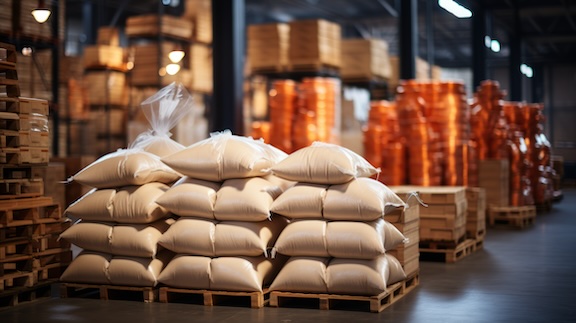
Strategic capital equipment decisions can make the difference between thriving operations and struggling margins.
Whether you’re running a food manufacturing facility or distribution center, understanding how to evaluate and optimize equipment investments to meet both operational and financial needs is critical for your business’s long-term success.
Leasing vs. buying
For many food companies, leasing offers immediate advantages. From lower upfront costs to predictable monthly expenses, it’s an attractive option — especially for companies just entering the U.S. market.
Purchasing equipment, on the other hand, can provide better long-term value for established operations with stable cash flow. When you buy, you build equity and maintain complete control over the asset, and you can customize equipment to meet specific cultural or regulatory requirements.
When weighing options, consider the total cost of ownership, including maintenance, insurance and potential resale value.
Beyond traditional bank loans
If you’re going the buying route, you may explore equipment financing, which may offer lower downpayments using the equipment itself as collateral. Plus, there are also sale-leaseback arrangements, freeing up capital for inventory or expansion.
Keep in mind that your choice of financing can also impact your tax situation, so consult with your accountant to understand how each option might impact your overall financial strategy.
Depreciation and tax implications
When you purchase equipment, the IRS allows you to write off the cost over time through depreciation, reducing your taxable income and saving you money on taxes. There are different ways to do this, and choosing the right method may save you thousands of dollars.
Under Section 179, you can deduct the full cost of equipment in the same year you buy it, up to $1.16 million for 2024. This means if you spend $50,000 on a new commercial oven, you can deduct the entire amount from your taxes right away instead of spreading it out over several years.
There’s also bonus depreciation, which lets you deduct 80% of equipment costs immediately. You may combine this with Section 179 for even bigger tax savings in your first year. But as always, it’s best to speak with your accounting professional to determine the best choice for your business.
Budgeting for maintenance, replacement and efficiency improvements
Smart equipment management means planning ahead for upkeep and replacements. It’s important to keep track of how your equipment performs so you can replace it at the right time, before costly breakdowns happen.
Create a replacement schedule based on each piece of equipment’s expected lifespan, your business growth plans and new technology that might improve efficiency. This proactive approach prevents emergency repairs that can shut down operations and cost you money in lost sales.
Maintenance contracts will of course add to your monthly expenses, but they also offer expected costs so there are no surprises, and reliable service if and when something goes wrong. Additionally, investing in energy-efficient upgrades like a new refrigeration system may pay for themselves over time through lower utility bills.
Future-proofing your equipment investments
The experts at Magone & Company can guide you in making equipment choices that drive sustained profitability and competitive advantage for your business. Reach out today to see how we can help.
This document is for informational purposes only and should not be considered tax or financial advice. Be sure to consult with a knowledgeable financial or legal advisor for guidance that is specific to your unique circumstances.
